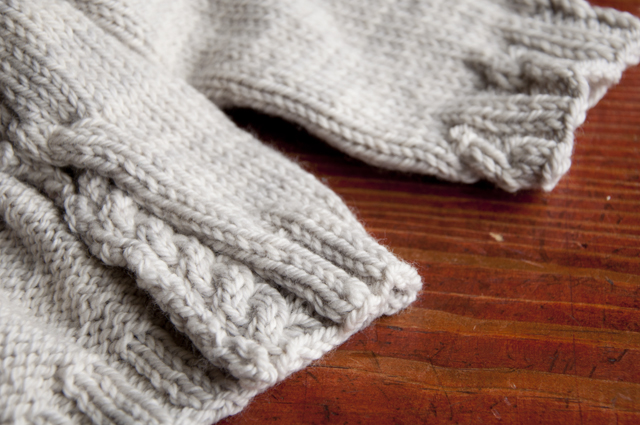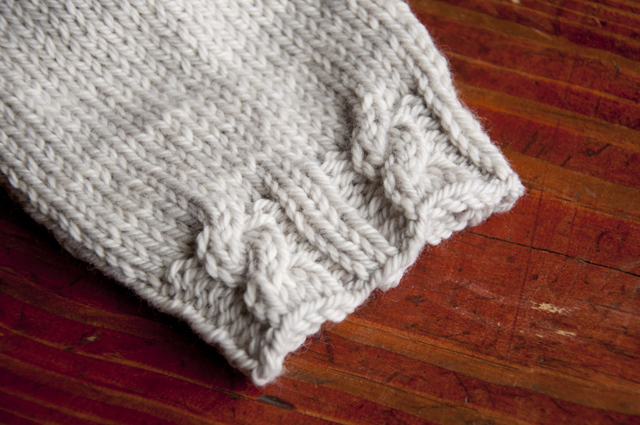If you’re knitting Marion, you might have noticed that the pattern only includes written instructions for the working the cable stitch pattern flat. Or maybe you didn’t notice and you’re wondering how other people did. The key thing is that the instructions are written as rows, not rounds, and there is a clearly labelled WS row. Stitch patterns for working in the round should never have WS rows or be written as rows.

If you only have flat written instructions and have to work in the round, that leaves you with two options. You can follow the chart, or you can convert all the WS rows to RS rounds. To convert them, you’ll need to translate the instructions so they’re written as you look at the knitting from the RS, swapping out stitch instructions for their opposite. With a stitch pattern like the one in Marion, that’s easy enough. You just swap out the instructions to purl four with knit four.

For more complex stitch patterns, you’ll have to do a bit more work because the order in which you work the stitches also needs to change if they’re not all the same. Let’s say that the WS row we’re translating to a RS round is “K4, p2, k1.” In order to convert it, we have to adjust the order in which the stitches are worked as well as the stitches themselves. As a RS round, the instructions would be, “P1, k2, p4.” Because WS rows are worked in the opposite direction as RS rounds, we have to make our changes starting with the last stitch, moving to the first, translating stitch by stitch.
Leave a Reply to Andi Cancel reply